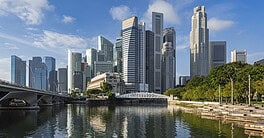Some of these nations handled the pandemic well and some did not. It almost made no difference in how people evaluated their satisfaction with life.
INTRODUCTION
Over the past two years, the World Happiness Report specifically explored how some Asian countries such as China and South Korea managed to weather the pandemic better than others in the region and how people’s emotional wellbeing was affected by policy. Their relative success in containing Covid-19 can be attributed to better civic cooperation in relation to their government responses. These measures included stringent physical distancing and mobility control rules, as well as comprehensive testing, tracing, and isolation policies. By contrast, the weaker strategies put in place by Japan were associated with one of the worst performances on the continent.
Yet certain positive results in battling the spread of the virus—as also proved by the experience of other nations worldwide—did not necessarily translate into significant leaps towards the top positions of the happiness index, the same way poor outcomes did not lead to dramatic drops in the ranking. Again, the example of Japan, a country that keeps climbing the index despite the odds is proof of that.
The pandemic brought so much pain and so many challenges to everyone, it is only natural to associate the idea of happiness (or the lack of it) to how small (or big) has been the toll taken by Covid-19 on our lives. However, many are the elements that contribute to determining one’s satisfaction with life, which also explains why—two years on since the start of the global health emergency— the averages of the 146 countries surveyed in the 2022’s edition of the report, with very few exceptions, prove remarkably stable in comparison to pre-pandemic levels.
GDP per capita, social support in times of need, absence of corruption in government, healthy life expectancy, freedom to make life choices, generosity or charity towards others: these are the six key variables used by the researchers to evaluate people’s wellbeing. With one clear takeaway: whichever obstacle life throws at us, a balance of all these ingredients is the true recipe for long-term happiness.
#10 | MONGOLIA

Click To View GDP & Economic Data
Over the past six years, the Mongolian People’s Republic climbed 32 spots (11 of which in 2020 and 2021) in the Happiness Index, to the 68th position it holds today.
Why do Mongolians feel happier each passing year? Social, environmental and geopolitical challenges abound. At the same time, during the past three decades the country tripled its GDP, slashed its poverty rates and through a solid 12-year compulsory educational system it strengthened the foundations of its growing economic success.
Then again, while money certainly plays a role in improving one’s individual sense of wellbeing, Mongolians are happy because they have not forgotten what really matters. These lessons are learned early on: a recent academic study compared how children define happiness in Finland, Japan and Mongolia. For Finnish children, happiness appeared to be related to personal achievement and success; Japanese kids often characterize happiness as not experiencing unpleasant events or being scolded; for Mongolian children, happiness was predominantly described by referencing their family relationships and community.
#9 | KYRGYZSTAN
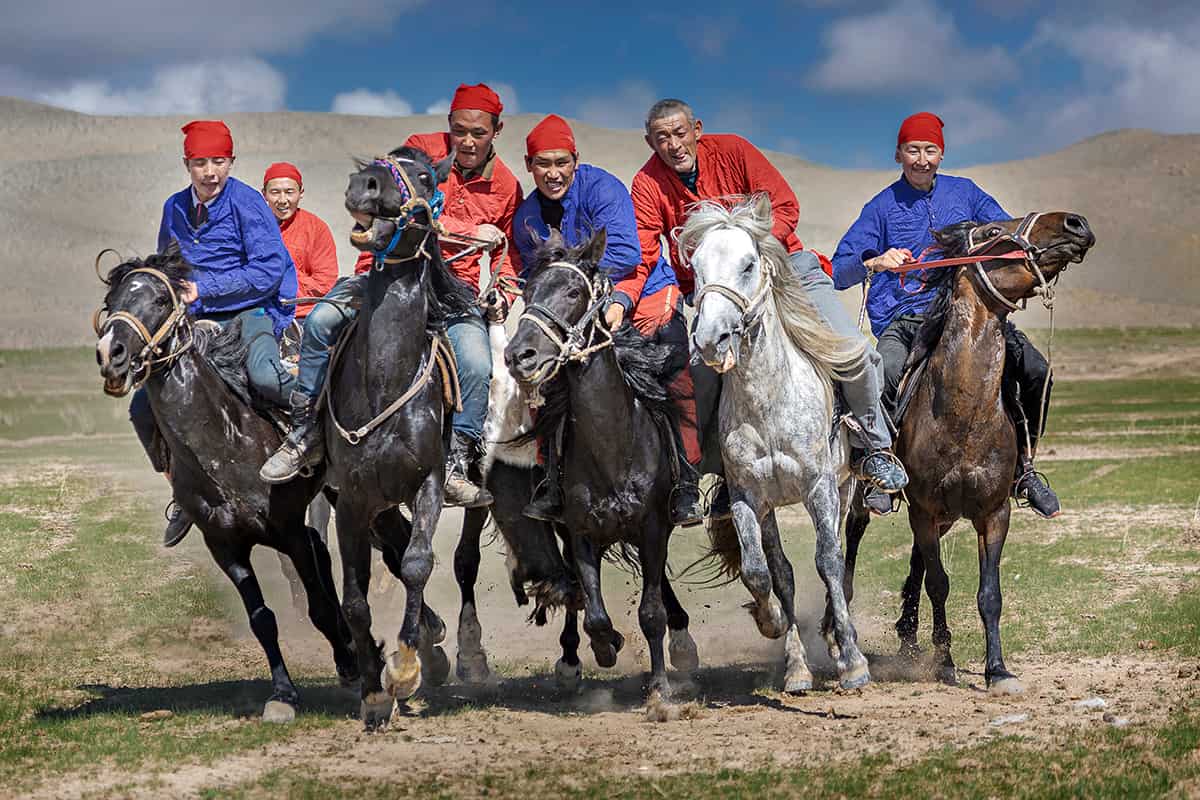
Click To View GDP & Economic Data
Like Mongolia, Kyrgyzstan is one of the countries that showed the most improvement from years past in the Happiness Report. It ranked 98th in 2017, 92nd a year later, then 86th, 74th, 67th, and all the way up to the 64th position it currently occupies—this beautiful country in Central Asia you can’t spell must be doing something right. A safe and welcoming place to visit, Kyrgyzstan’s population of 6.6 million live sometimes harsh, but tranquil and gregarious lives. Not surprisingly, out of all the key components contributing to happiness, Kyrgyz people score particularly well in the departments of social support and healthy life expectancy.
That said, this former Soviet Republic is no paradise. Corruption at the institutional level is a problem and the gap between the have and have-nots is increasing. Yet, living standards have been gradually improving for everyone and Kyrgyzstan has been recently re-classified by the World Bank from a low income to a lower-middle income country. Furthermore, with a population whose median age is just 26, enthusiasm and confidence in the future are ubiquitous.
#8 | THAILAND
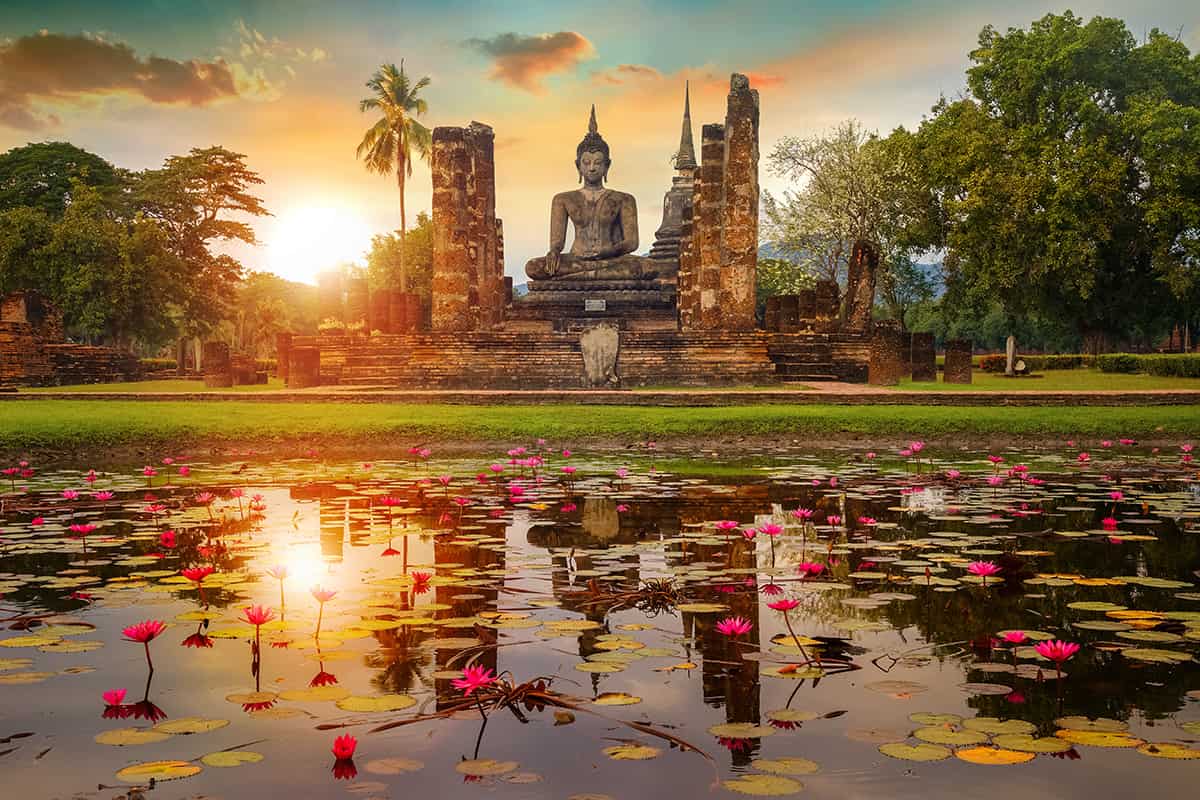
Click To View GDP & Economic Data
In 2017, Thailand occupied the 32nd place in the happiness global ranking—then it started sliding back. Over the past two years, Thailand has been roiled by anti-government demonstrations, a ruinous country-wide drought, and the pandemic-induced collapse of the tourism sector. As a result, in the latest edition of the report Thailand falls again, dropping seven spots to number 61— its lowest position ever in the ranking.
#7 | PHILIPPINES
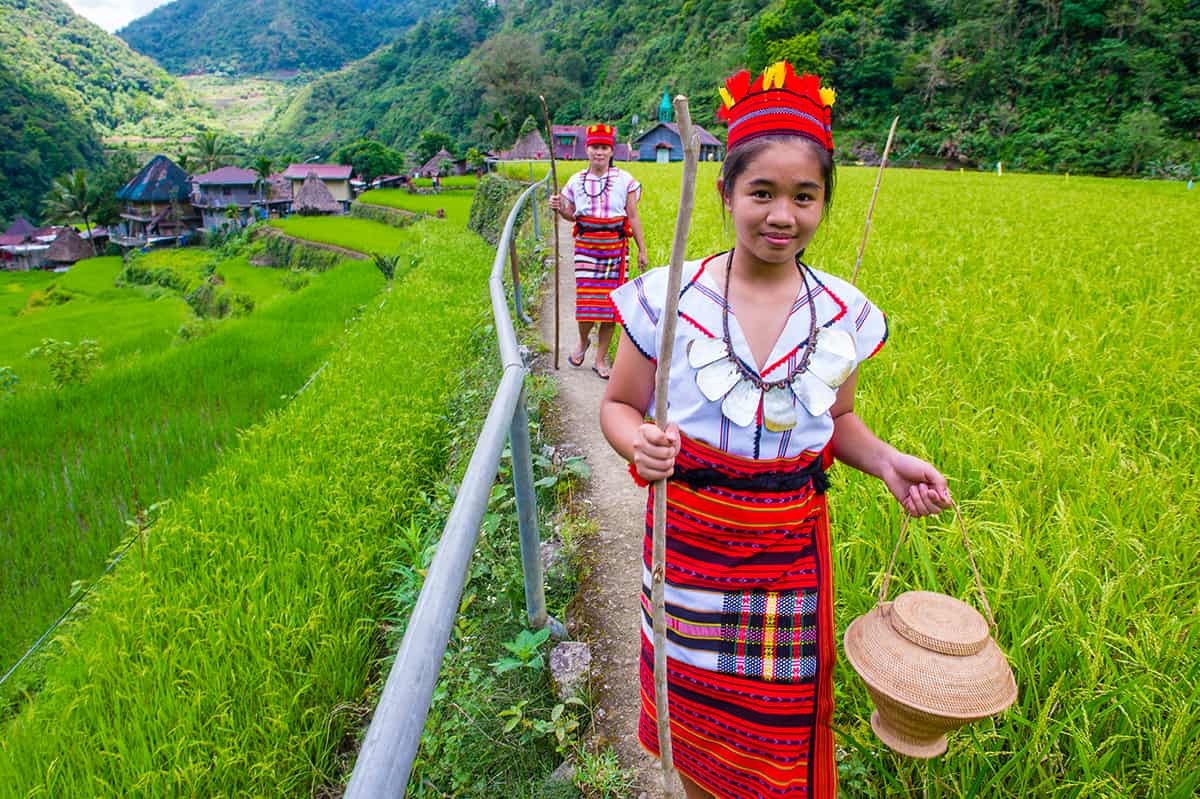
Click To View GDP & Economic Data
If we look at the GDP per-capita figures, the Philippines is far behind nations like Indonesia, China or Malaysia. If we look at the World Happiness Index, the Philippines is well ahead of all of them.
In truth, while this year Filipinos gain one spot in the ranking to position number 61, two years ago they were doing even better, placing 52nd globally. Despite the slip-up, this country of about 110 million has shown one of the greatest improvements in the United Nations’ ranking climbing more than 30 positions in less than a decade.
The reason why the Philippines over-performs in comparison to many wealthier nations on the continent seems to be a result of increased income, trust in public institutions and life expectancy. Filipinos also earn excellent scores in the personal connection category—or, as one pundit commented online a while ago, when it comes to the five F’s: family, friends, food, fun and faith.
#6 | SOUTH KOREA
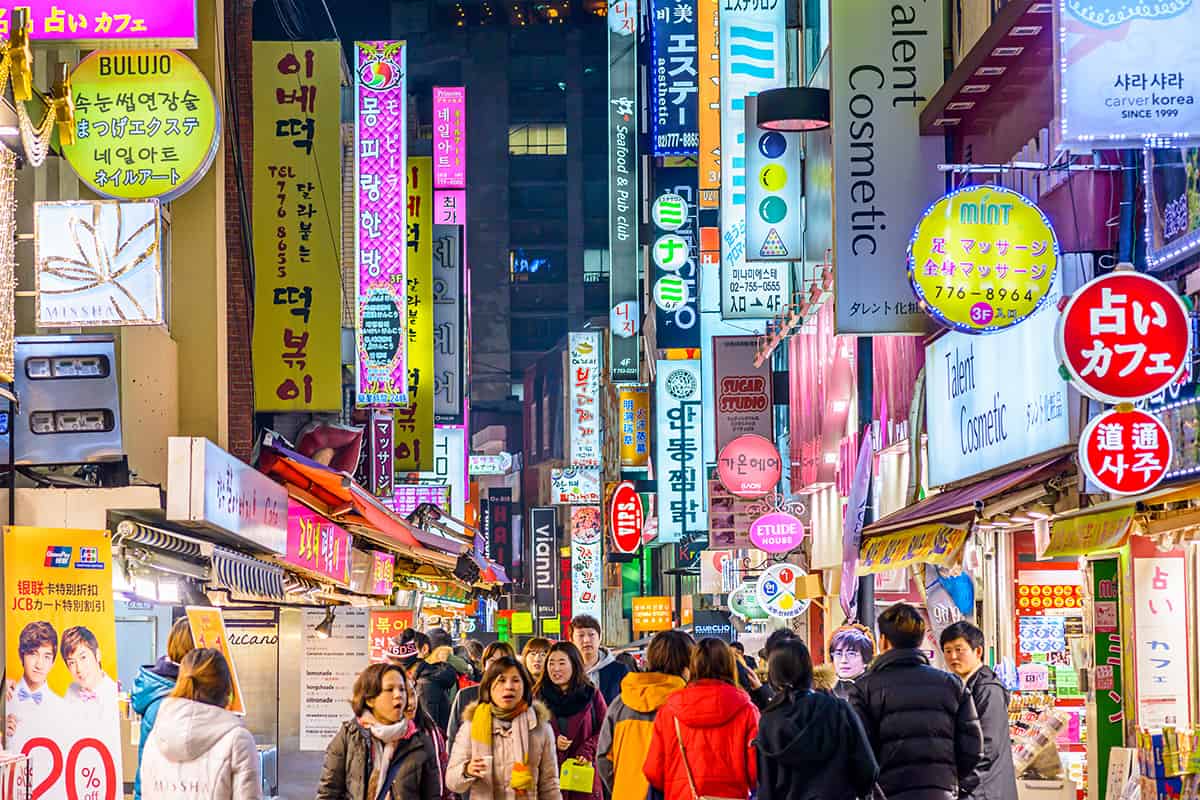
Click To View GDP & Economic Data
South Korea was remarkably successful in containing the pandemic, and never went into full lockdown. As a result, it has also experienced a relatively limited economic fallout compared to that of other major economies. The country’s testing capacity was greatly enhanced after the MERS outbreak in 2015, and first through the government’s “testing, tracing, treating” strategy, then by getting its vaccination rate to over 90%, it managed to reduce the spread of the virus through all its various stages.
Most importantly, Koreans realized that they were in it together. Last year, the Happiness Report compared three dimensions, or cultural traits, of the population of a dozen countries in the Asia Pacific region and Europe, as well as the United States: individualism versus collectivism, long-term orientation versus short-term orientation, and indulgence versus restraint. Containing the spread of Covid-19 clearly requires that people are disciplined and sacrifice their personal needs and short-term interests (such as personal freedom and not wearing a mask) for the long-term benefit of going back to life as it was before the coronavirus. Along with ranking the third least-indulgent country, South Koreans performed better than their counterparts when it came to their sense of common good and long-term orientation (Western nations, you guessed right, did not do so well).
And it almost goes without saying that, aside from Covid, selflessness and sense of duty—which are directly related to a number of variables that can boost individual wellbeing—can make a country rather happy.
#5 | JAPAN
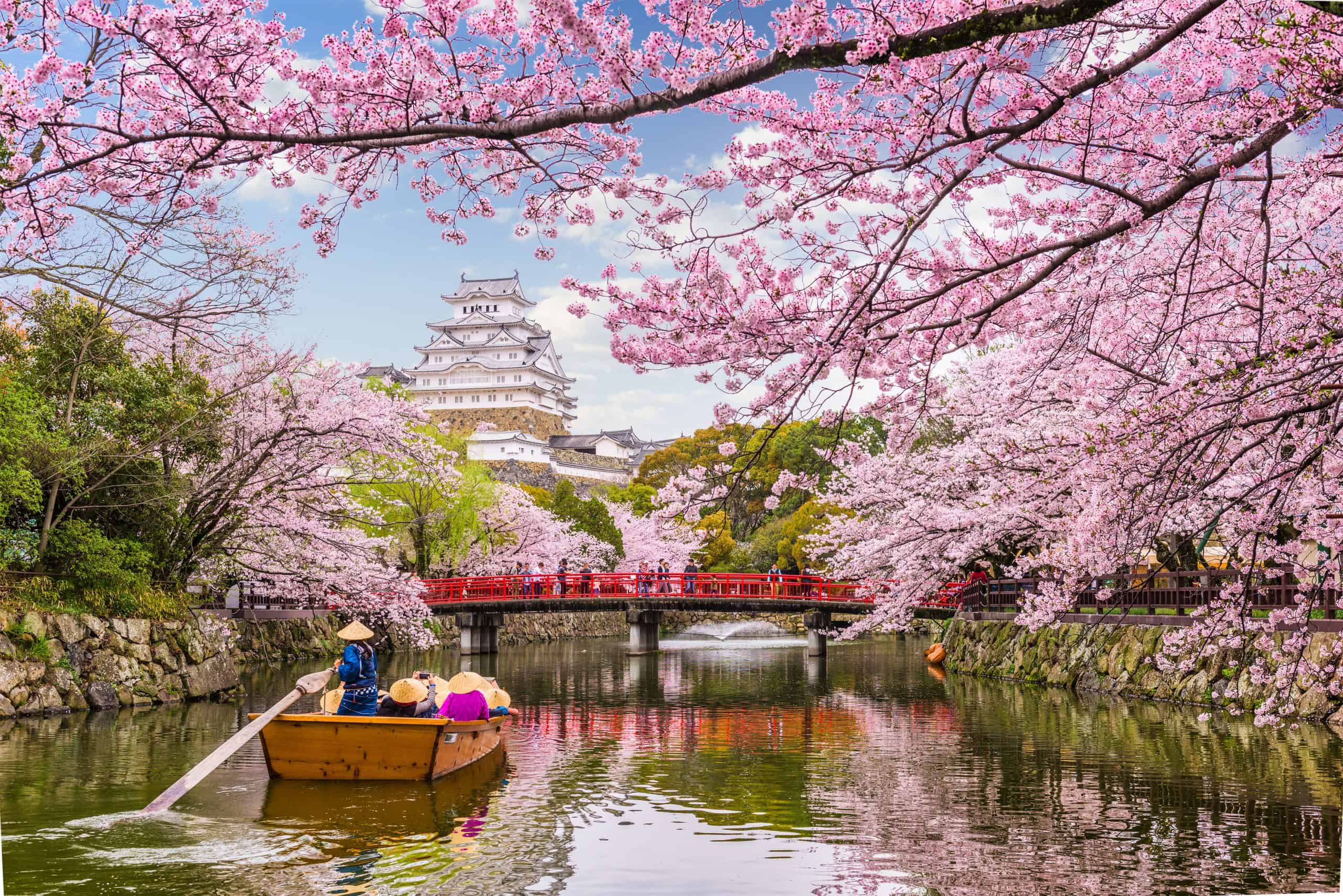
Click To View GDP & Economic Data
When the pandemic hit, the Japanese government did not implement mobility control measures such as lockdowns due to certain constitutional limitations. Subsequent amendments to the law made it possible to declare a “state of emergency,” but most recommendations remained voluntary rather than mandatory. Testing too has not been extensive, but only targeted to people with potential symptoms. The result has been soaring cases and deaths, along with the economy shrinking in 2020 by 4.8%, the first contraction since 2009, and rebounding to a modest 1.7% in 2021.
“Japan is as happy as it feels—miserable,” was a headline a few years ago published by The Japan Times. That was perhaps an exaggeration, but that there are reasons for concern is not in doubt: the country is increasingly unequal, the population aging rapidly, and the government—to confront a sudden surge in suicides—has recently appointed its first “minister of loneliness.”
Nonetheless, Japan has gained six spots in the happiness index in the previous edition of the report, and another two this year. Not only that, on a scale from 1 to 10, taking into account all the six variables that contribute to happiness, its citizens rated their satisfaction with life at a little over 6, the highest since 2015. How do we explain that? Apparently, not even the Japanese could.
#4 | UZBEKISTAN
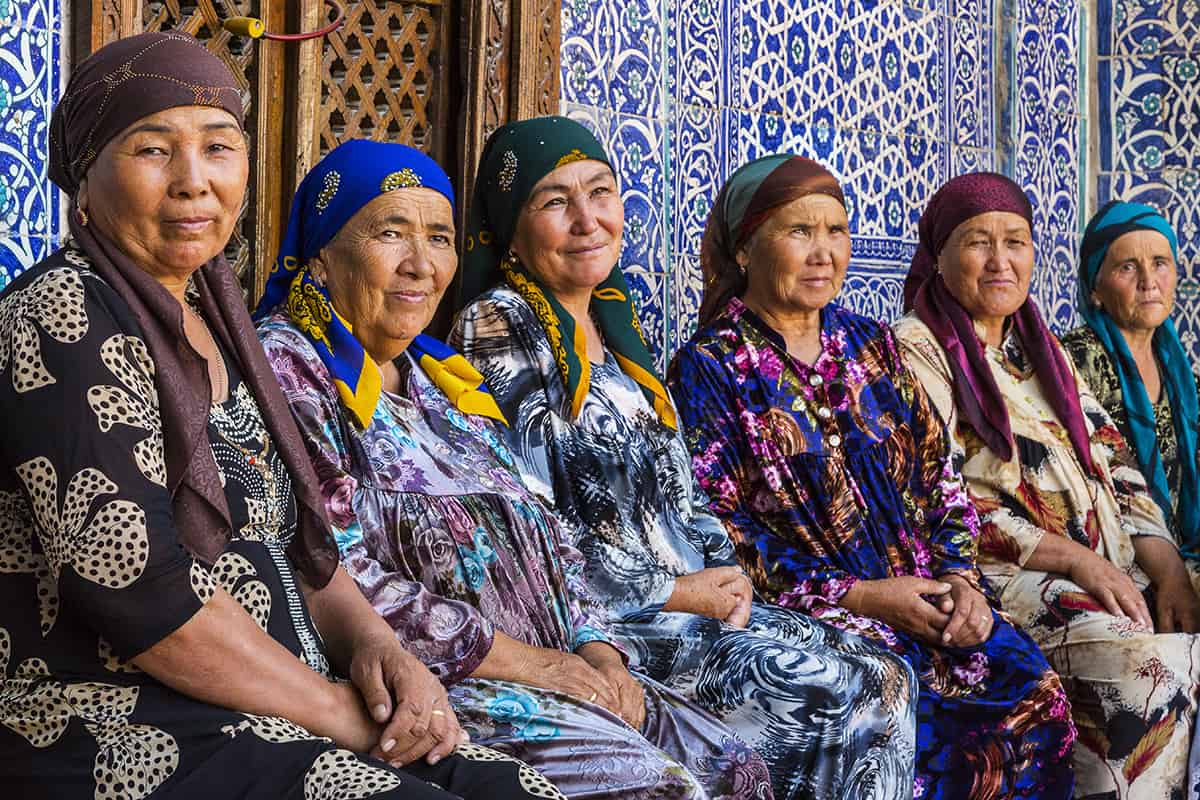
Click To View GDP & Economic Data
This ex-Soviet Republic is Central Asia’s most populous country and one of the happiest. According to the report of the United Nations, its 34 million citizens score well when it comes to how much control they feel they have over their lives, to social support and to generosity towards others. Uzbekistan is also becoming increasingly wealthier: 20 years ago its poverty rate was almost at 30%, today it is closer to 10%. Along the way, the economy has often grown by more than 7% annually, and 10 years ago the World Bank re-classified the country from a low-income to a lower middle-income nation.
Rich in natural resources, Uzbekistan has undertaken large-scale reforms to diversify the economy and attract foreign investors and is seen as a stabilizing force in the region. Yet, the asserted freedom enjoyed by the Uzbekistanis to make their life decisions seems to be in contrast with their freedom in the political sphere: following the death of Islam Karimov, authoritarian ruler for 27 years, in 2016 former prime minister Shavkat Mirziyoyev won the presidential elections with 88% of the vote amid reports of widespread irregularities. The internet and the press remain subject to tight censorship.
#3 | KAZAKHSTAN
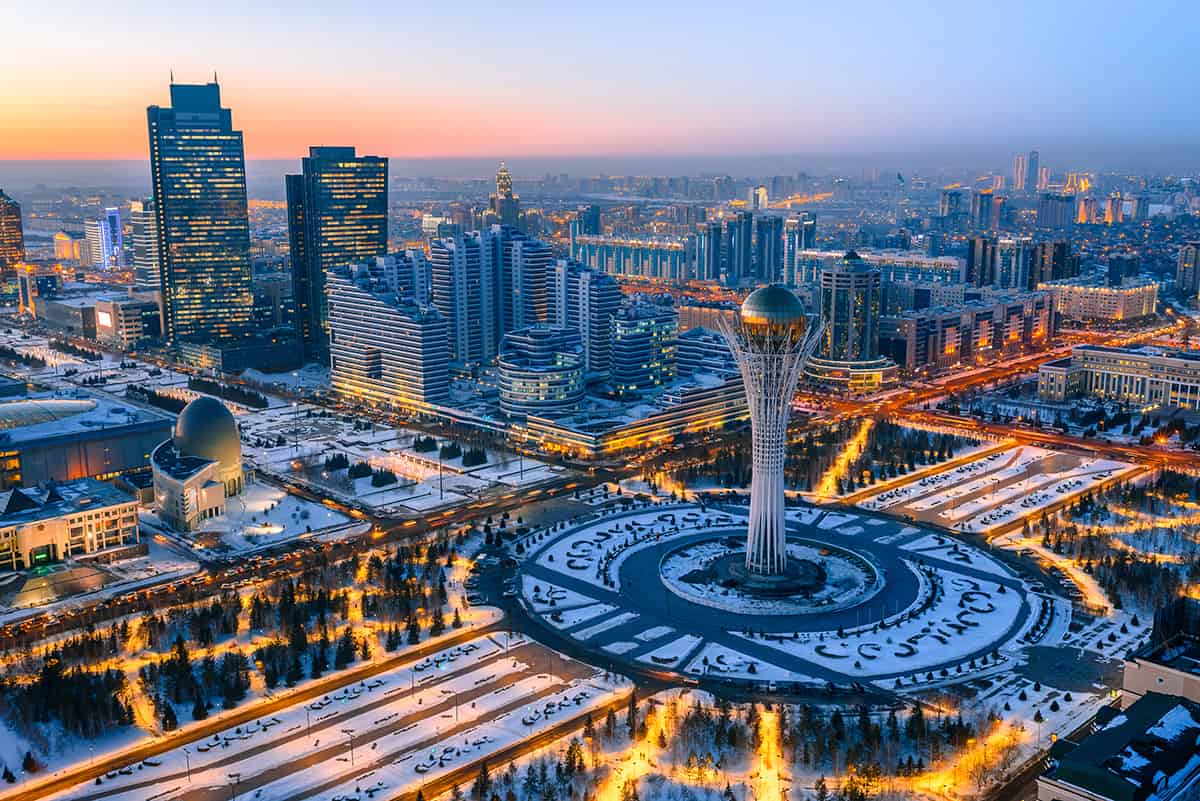
Click To View GDP & Economic Data
In the space of just three years, and amid the coronavirus pandemic, Kazakhstan climbed twenty spots in the World Happiness Report. A surprising nation on all accounts, Kazakhstan is home to over 120 ethnic groups and nationalities, it is the largest landlocked country in the world and the ninth-largest. Trivia questions about the country could potentially include a myriad of too-long-to-delve-into details about snow leopards, caviar, rockets and mythical Amazon warriors. Factors other than these odd bits of trivia better explain why Kazakhstan is happier than many richer nations in both the East and the West. That is not to say that it is poor: an upper-middle-income country rich in oil and gas, according to the Asian Development Bank only about 4% of the population lives below the poverty line. The population is very young too: about half is under the age of 30, and one-fourth is under 15.
Despite all shortcomings and problems that a country might experience (and in the case of Kazakhstan its autocratic regime is one of them), the Happiness Report has repeatedly pointed out that a younger population generally means a happier one too.
#2 | SINGAPORE
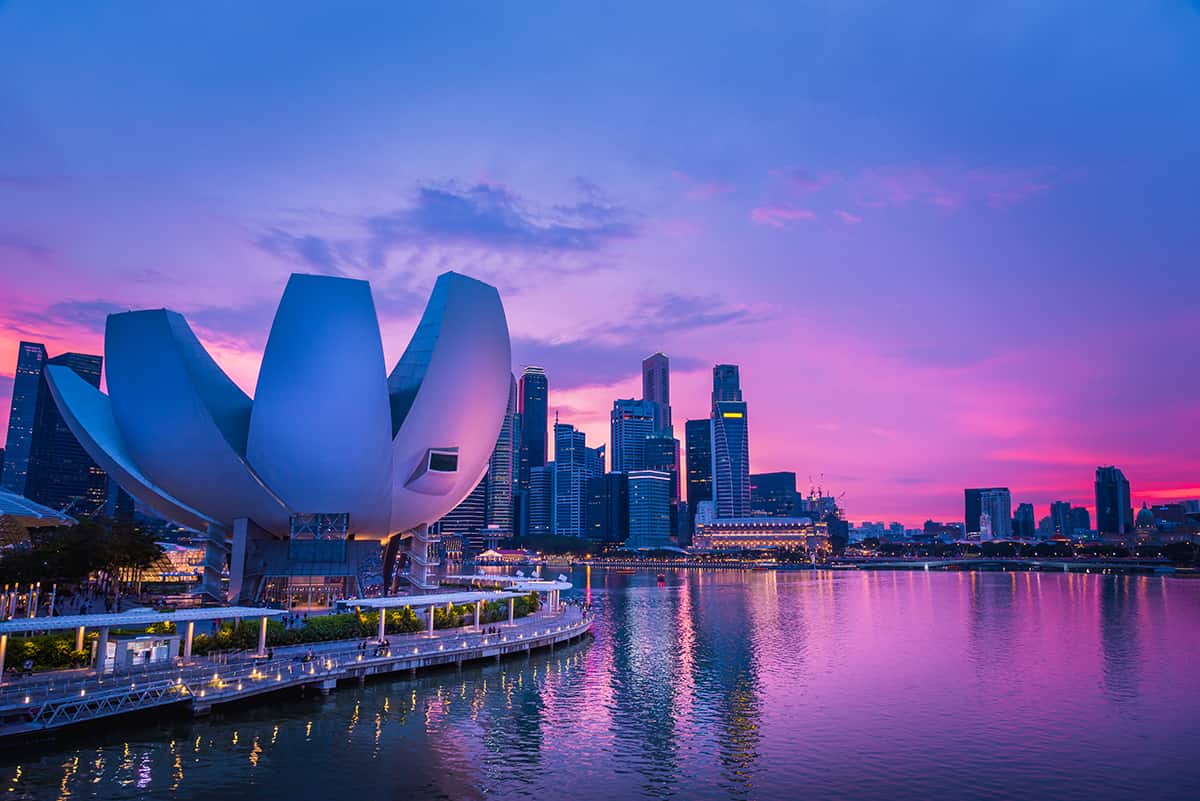
Click To View GDP & Economic Data
Singapore is one of the ultra-rich countries of the world, why isn’t ultra-happy too then? Ranking in second place in Asia and 27th worldwide is nothing to complain about, after all this country gained five positions in this year’s edition of the happiness index—yet there are much poorer nations faring much better.
The old adage that money doesn’t buy happiness might be tired and overused, but an overwhelming number of studies has proved it true time and time again. In the World Happiness Report, Singapore does indeed do very well when it comes to income, institutional trust and healthy life expectancy too, but not so great in the categories of generosity towards others and strength of social support. Personal relationships, and not money, are the real superchargers of happiness.
#1 | TAIWAN
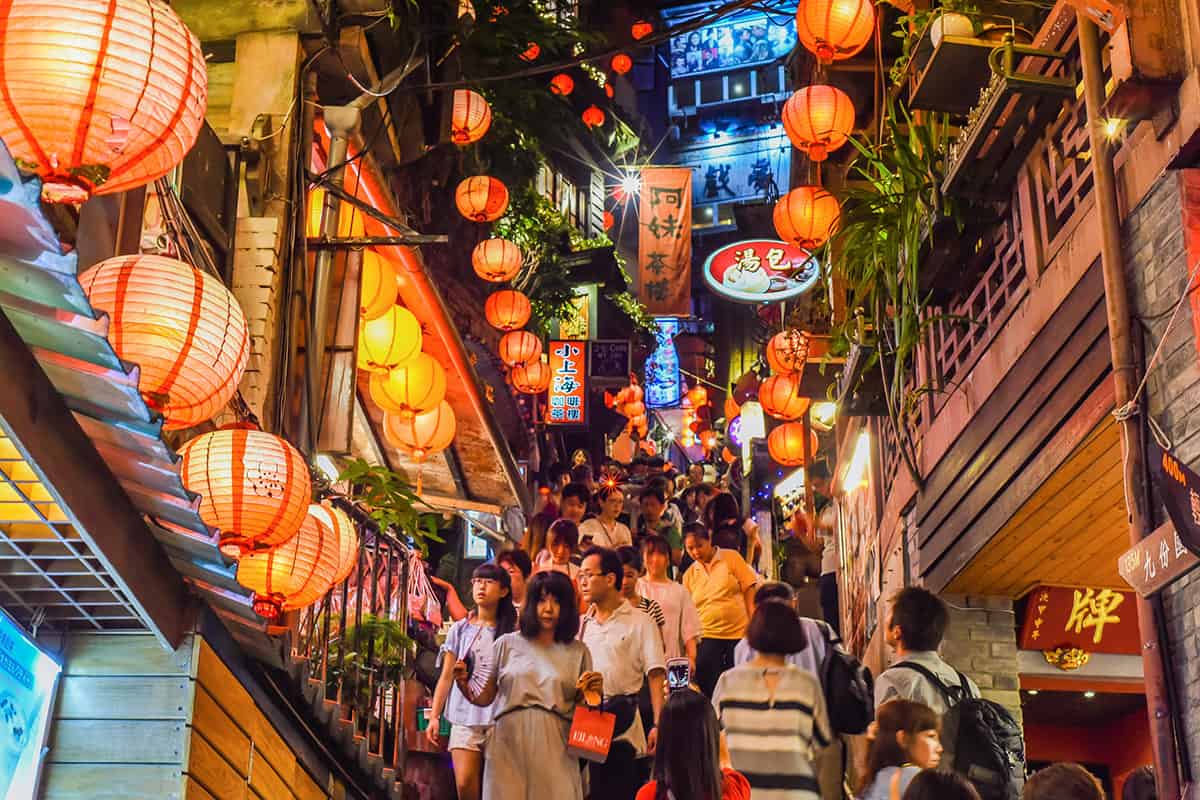
Click To View GDP & Economic Data
Taiwan got used to scoring high in the World Happiness Report when it comes to GDP per capita, life expectancy and social support—the latter being a reflection of a society where multigenerational families often live together and community is valued over individuality.
Taiwan has also done an impressive job in stopping the pandemic on its tracks from the onset, and never went into lockdown. Although it falls two positions in the index to twenty-six, looking at the entire Asia Pacific region is not too far behind New Zealand and Australia, in the spots number ten and twelve of the list respectively. Furthermore, the decline is due to larger improvements made by other countries rather than by a significant deterioration in the overall satisfaction with life expressed by its citizens: in fact, that stays stable at around 6.5 out of 10.
That said, not everything is blissful on this island of about 24 million: Taiwan has been independent since 1949, but China views it as a breakaway province. In recent years, Beijing stepped up its military activities and flew warplanes near the island, heightening fears that it will try to recover control over its former territory.
|
Global Rank |
Regional Rank |
Country |
||
| 26 | 1 | Taiwan | ||
| 27 | 2 | Singapore | ||
| 40 | 3 | Kazakhstan | ||
| 53 | 4 | Uzbekistan | ||
| 54 | 5 | Japan | ||
| 59 | 6 | South Korea | ||
| 60 | 7 | Philippines | ||
| 61 | 8 | Thailand | ||
| 64 | 9 | Kyrgyzstan | ||
| 68 | 10 | Mongolia | ||
| 70 | 11 | Malaysia | ||
| 72 | 12 | China | ||
| 77 | 13 | Vietnam | ||
| 78 | 14 | Turkmenistan | ||
| 81 | 15 | Hong Kong | ||
| 82 | 16 | Armenia | ||
| 83 | 17 | Tajikistan | ||
| 84 | 18 | Nepal | ||
| 87 | 19 | Indonesia | ||
| 92 | 20 | Azerbaijan | ||
| 94 | 21 | Bangladesh | ||
| 95 | 22 | Laos | ||
| 105 | 23 | Georgia | ||
| 114 | 24 | Cambodia | ||
| 121 | 25 | Pakistan | ||
| 126 | 26 | Myanmar | ||
| 127 | 27 | Sri Lanka | ||
| 136 | 28 | India | ||
| 146 | 29 | Afghanistan | ||
| Source: The UN’s 2022 World Happiness Report. | ||||



